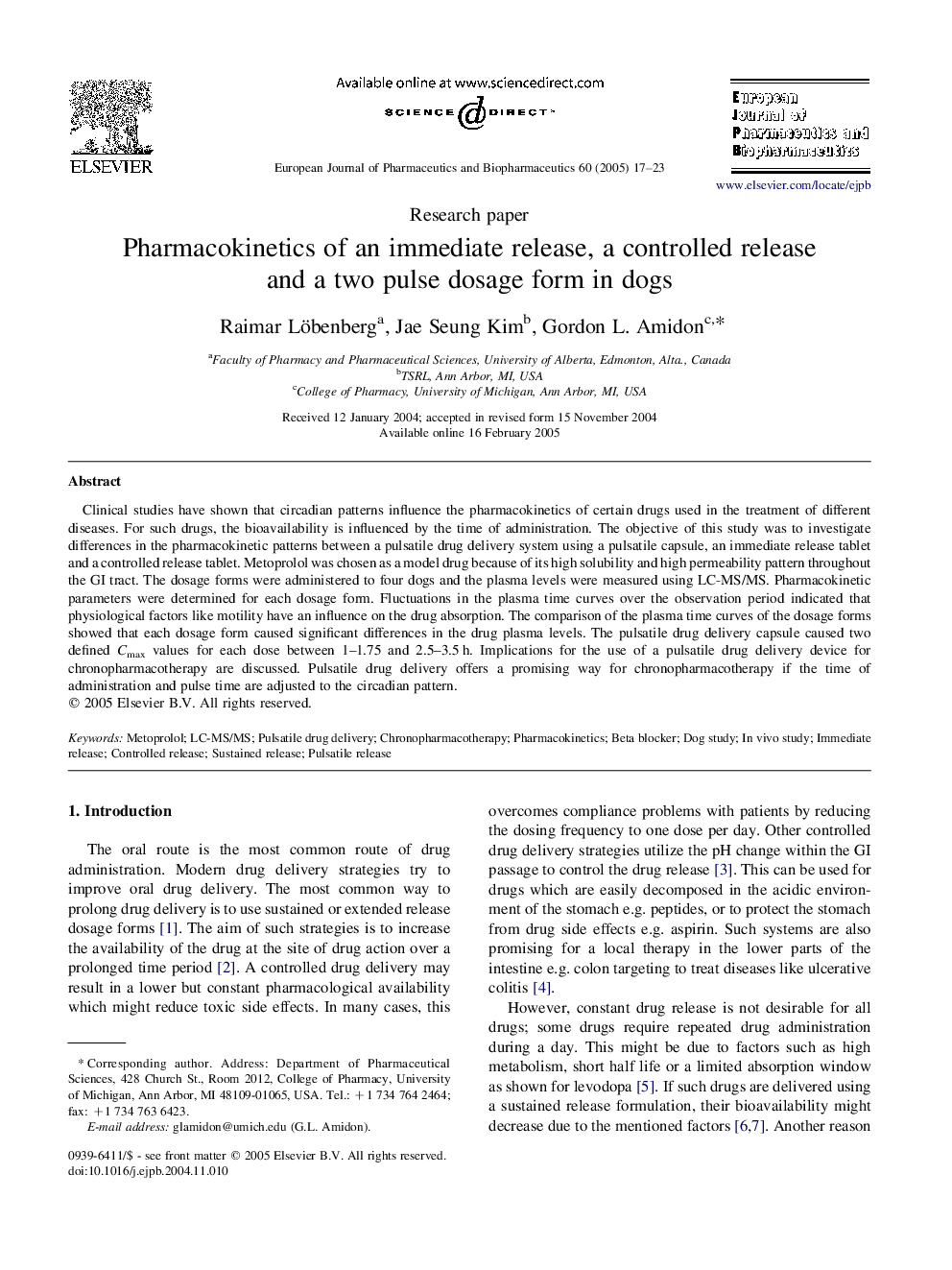| Article ID | Journal | Published Year | Pages | File Type |
|---|---|---|---|---|
| 9901479 | European Journal of Pharmaceutics and Biopharmaceutics | 2005 | 7 Pages |
Abstract
Clinical studies have shown that circadian patterns influence the pharmacokinetics of certain drugs used in the treatment of different diseases. For such drugs, the bioavailability is influenced by the time of administration. The objective of this study was to investigate differences in the pharmacokinetic patterns between a pulsatile drug delivery system using a pulsatile capsule, an immediate release tablet and a controlled release tablet. Metoprolol was chosen as a model drug because of its high solubility and high permeability pattern throughout the GI tract. The dosage forms were administered to four dogs and the plasma levels were measured using LC-MS/MS. Pharmacokinetic parameters were determined for each dosage form. Fluctuations in the plasma time curves over the observation period indicated that physiological factors like motility have an influence on the drug absorption. The comparison of the plasma time curves of the dosage forms showed that each dosage form caused significant differences in the drug plasma levels. The pulsatile drug delivery capsule caused two defined Cmax values for each dose between 1-1.75 and 2.5-3.5Â h. Implications for the use of a pulsatile drug delivery device for chronopharmacotherapy are discussed. Pulsatile drug delivery offers a promising way for chronopharmacotherapy if the time of administration and pulse time are adjusted to the circadian pattern.
Keywords
Related Topics
Life Sciences
Biochemistry, Genetics and Molecular Biology
Biotechnology
Authors
Raimar Löbenberg, Jae Seung Kim, Gordon L. Amidon,
